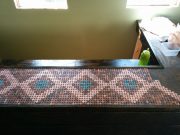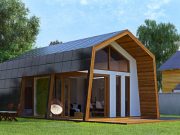Maybe the Egyptians had it right all along.
This contemporary manifestation of the iconic pyramid form makes an emphatic statement about the simplicity of an inherently structural architectural expression. Before architects and builders developed building technology to more efficiently battle gravity’s limitations, we relied on literal formal response to those rules. Simply put, the higher you built, the smaller the footprint. The result was the pyramid: a pure geometric form that allowed ancient builders to reach heights never seen before.

This conceptual design from Mexican architect Juan Carlos Ramos pays homage to this classic vernacular while mixing in features that can only be constructed using modern techniques and materials. It’s an interesting dichotomy of old vs. new, telling a story of how far we’ve come as builders. For example, one of the facades is completely transparent, housing a massive triangular glazed opening.
 Horizontal and vertical slices are cut into the pyramid, opening up areas for decks, views, and even a car port.
Horizontal and vertical slices are cut into the pyramid, opening up areas for decks, views, and even a car port.
 The main living space welcomes an open view to the outside, speaking to the structural and architectural feats we are able to achieve.
The main living space welcomes an open view to the outside, speaking to the structural and architectural feats we are able to achieve.































